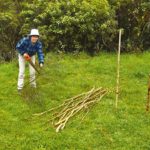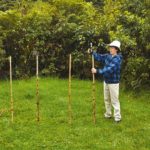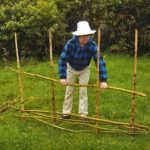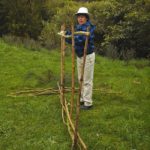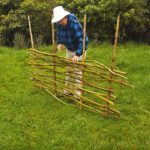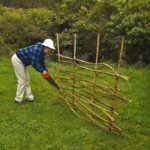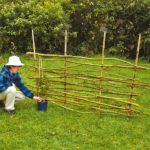How to weave a wattle fence
- 1. Gather the branches and stakes you need before starting.
- 2. Hammer the stakes into the ground.
- 3. It’s easier to weave the branches through the stakes nearer the top and then to push them down.
- 4. Weave the branches through the stakes.
- 5. Push the branches closer if you want to make a tighter weave.
- 6. Cut the ends of the branches and tops of the stakes to make it neater.
- 7. A wattle hurdle is ideal as an attractive trellis to grow limbing plants.
Make a fence using a locally sourced renewable product, using what’s around you rather than having it made for you.
Words: Fiona Cameron
Weaving wattle is an ancient craft where you can make fences out of coppiced branches and stakes to form a woven lattice. It would be hard to have a more eco-friendly fence: no chemicals used to preserve the timber, no manufactured steel, just a locally sourced renewable product, using what’s around you rather than having it made for you.
When tied together, wattle hurdles make a solid fence or enclosure – the tighter the weave and thicker the branches, the stronger the fence. Hurdles can either be fixed in position or moveable.
In the garden, a wattle hurdle is ideal for climbing plants to grow up and to support vegetables like beans, tomatoes and cucumbers as they grow.
If you want to have a go at making a wattle hurdle, work out what you would like it for, the dimensions, then what materials you could use before you start. Traditionally trees like hazel, willow and alder were preferred as they have flexible branches and are plentiful and coppice well.
I didn’t have any of these but looking around our property there was no shortage of broom and bamboo. I could tidy these up and use them constructively which was very appealing.
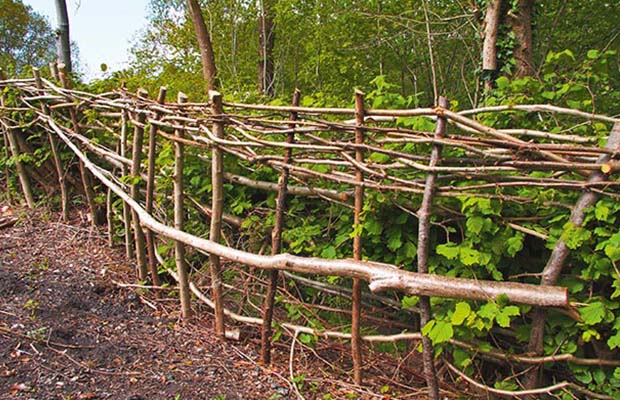
I wanted my hurdle to be fixed in position so the stakes would need to be reasonably ground-durable. Bamboo works well as it can last a few years in the ground. Broom was fine for the weaving as it would not be touching the ground and also last a few years. Other examples of durable timber you can use are manuka, kanuka, totara and macrocarpa and some gums.
The weaving material can be less durable and any flexy branches you have in abundance will do. Bamboo can also be split down the middle and used for weaving.
1. To make the hurdle, cut the stakes and bang them into the ground –four is a good number.
2. Start weaving the branches through the stakes, starting at the top where it’s slacker and pushing them down into position. Alternate the weave on each row of branches so they hold tightly.
TIPS FOR FENCE BUILDING
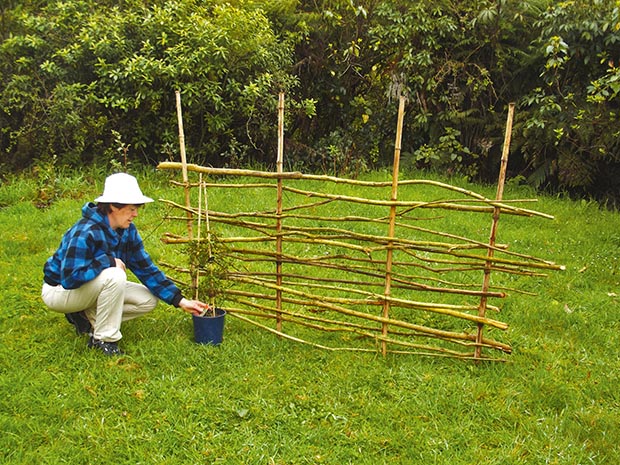
• A tighter weave is neater but requires straighter branches. It is also stronger and useful ifyou get keen and want to make an enclosure for chickens or a garden fence.
• A smaller wattle fence is ideal for garden edging. If you don’t push the branches close together the weave will not be so tight but you use less materials and this is fine for climbing plants.
• If a wattle hurdle is to be moveable, don’t make it so heavy it can’t be lifted, and don’t drive the stakes in too far. Once woven, pull the hurdle out from the ground and cut the ends of the stakes. If you make a number of hurdles they can then be tied together to make a strong, natural fence that can still be taken apart and moved.
READ MORE
Artisan willow weaver Peter Greer encouraging community spirit in Golden Bay
Love this story? Subscribe now!
 This article first appeared in NZ Lifestyle Block Magazine.
This article first appeared in NZ Lifestyle Block Magazine.
